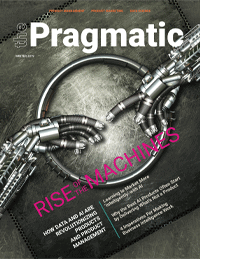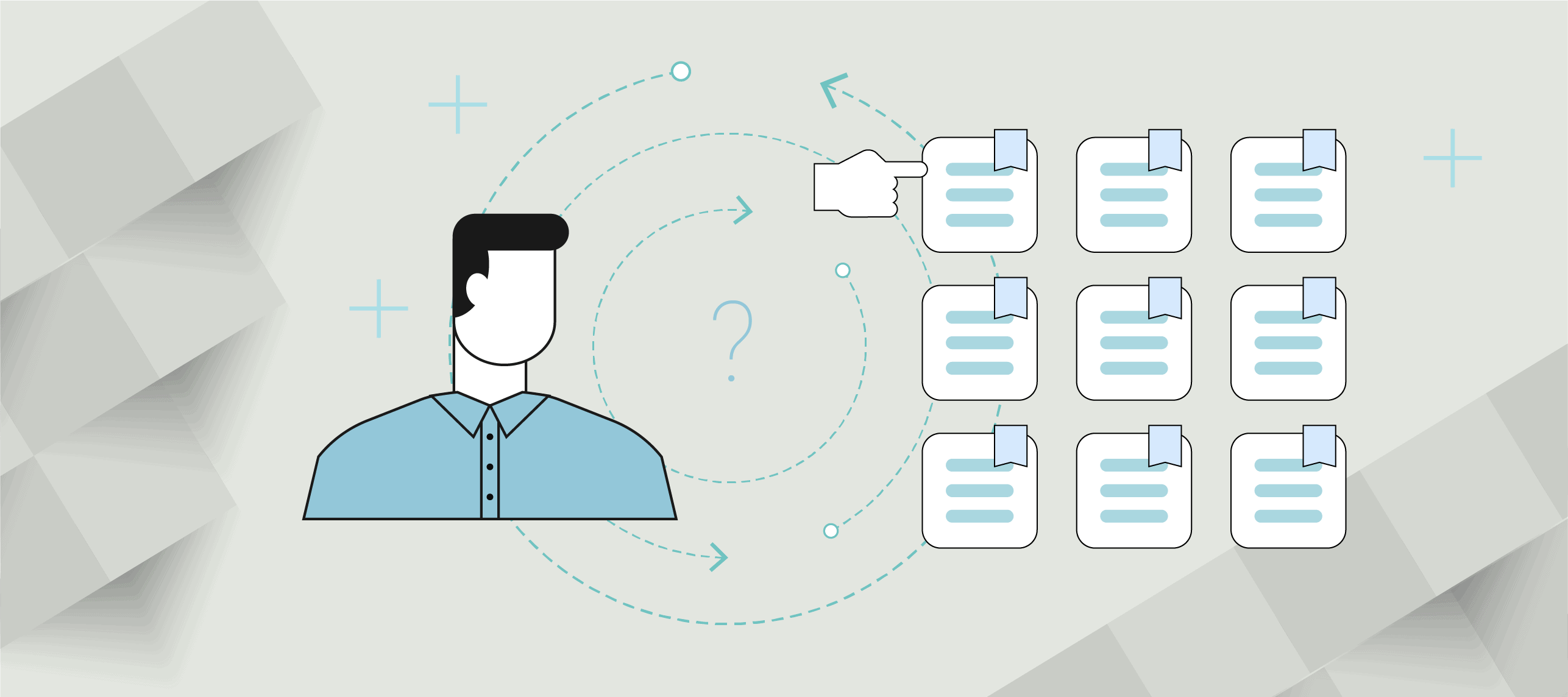THE WORST PART OF MARKETING, as any marketer can tell you, is that there is never a “slow” time. Whether you’re a marketing assistant or a CMO, if you don’t have enough to do, you are the only one to blame. Lack of money and resources aren’t a roadblock, as long as you have time, skills and imagination. And data. Did I mention data?
A half dozen years ago, data mining was the big marketing buzzword. In marketing classes, you’d hear the example of Target outing a pregnant teenager because, based on her purchase data, the company had deduced that the girl was pregnant before she had even told her parents. A 2012 article in Forbes about the incident explained that Target had to learn how to use its newfound knowledge in a way that didn’t creep out its buyers by making them feel like they were being spied on or that Target had somehow become omniscient.
Leveraging Machine Learning
This brings us to the marketing buzzword for 2018: artificial intelligence, or AI. AI and its fraternal twin, machine learning (ML), seem to be everywhere these days, and marketing is no exception. (However, I personally believe there are probably fewer marketers successfully using AI than those worrying that they should be.)
As a marketer working for a technology company, I can relate. Our company has abundant data about our customers that should enable us to market more intelligently to them. However, the potential of this can be overwhelming. Where do we start?
At my company, MatrixCare, our data integration experts are already busy incorporating tools like AI and machine learning into our next-generation marketing platform. MatrixCare serves the long-term, post-acute care market (think assisted living, skilled-nursing facilities, and the like). In addition to the industry’s most popular electronic healthcare records (EHR) platform for post–acute-care, we also sell marketing and referral management software to help professionals in those businesses increase their occupancy.
As the healthcare industry continues to consolidate into large, regional networks and value-based care is implemented to curb costs, this market has become highly competitive. Our software allows operators of these facilities to pull data on which hospitals are referring seniors to their own facilities, as well as to those of their competitors. Then, using ML, it examines historical outcomes data from the facilities themselves to help predict what types of referrals would be the best fit for their services. Armed with this information, the marketing team can tailor messaging to hospitals to target the types of patient referrals that will be most likely to experience positive care outcomes, which are also those that are most profitable for the organization. This is a unique competitive advantage for MatrixCare and its customers, and provides a win-win-win-win for all involved—the hospital, the long-term care facility, the senior patient, and, of course, MatrixCare.
3 Ways to Make AI Work for You
Although my company understands how to use AI to help marketers in our industry, as a marketer of our software, I still struggle with how to apply AI to my own efforts. So, I turned to a local expert, Scott Litman, founder and managing partner at Minneapolis-based Equals 3, LLC, to provide some insight. Equals 3 was built on the concept of showing marketers how to leverage data in creative ways for a competitive advantage, so I asked Litman to share some observations. When it comes to AI, he explains, there are three areas that seem to be gaining the most traction among marketers:
1. Scalable Personalization
In the battle to capture the consumer’s attention, AI is the weapon of choice. While Pragmatic Institute considers buyer personas to be the foundation of a successful marketing program and teaches marketers the principles of building personas as part of its certification curriculum, many marketers still struggle to implement the practice. Why? It’s simple: time. Although the Pragmatic methodology is sound, it requires time to meet with customers and do win/loss evaluations. With many marketing staffs running lean, time is a precious commodity. Litman notes that the MarTech Industry Council reported that 60 percent of B2B marketers were asking for a more accurate understanding of the buyer persona.
“AI can help deliver that,” Litman explains. “Marketers can take full advantage of today’s data-rich era, including social-media footprints, client surveys, and emails from customers to sales and service to analyze their audiences. Our technology can now analyze immense sets of data constantly in flux and draw detailed audience profiles explaining personality, needs and values.
With the help of AI, marketers can understand how different messages resonate with specific personalities,” he adds. “That’s knowledge that can advance personalization at the scale needed to drive action and, ultimately, boost revenue.”
2. Automating Common Workflows
Whether responding to an RFP or reporting ROI to justify marketing expenditures, many marketers spend huge amounts of time sifting through tools and data to find and compile the information they need. For more complicated data sets, the marketing professional often has to rely on a technical expert who may not sit in their department or rely on vendors or agencies to provide the needed information. Litman says a common frustration he hears from customers is that these inefficient processes waste time and resources. Often, by the time the information is gathered, there is little time left to strategically analyze the information or make informed decisions based on the results.
In fact, according to Harvard Business Review, marketing analysts spend a majority of their time (80 percent) battling with data preparation, rather than analyzing it. By leveraging AI to accomplish a key principle of product development—automating routine workflows—marketers can dig themselves out from under mountains of data and regain lost productivity.
“One of the biggest advantages of AI is how it can automate the most time-consuming tasks, greatly reducing the amount of manual work and giving more room for in-depth analytics and strategic planning,” says Litman. “In today’s world of machine learning, solutions are available where workflows can be automated around custom business processes and workflow needs. Complex reporting from multiple data sources or recurring reports are available instantly with the most updated figures—turning what used to take hours or days, into minutes. By automating these repetitive tasks, marketers gain a boost in productivity and are able to use their experience and intuition to strengthen the strategic components of reports vs. compiling data.”
3. Marketing Research (No Surprises Here!)
Brand marketers make their best decisions using a foundation of research—plus their own insights. Yet Dun & Bradstreet and Forrester Research found only 50 percent of B2B marketing and sales decisions are made based on data. “Despite the vast amount of data available and firms’ commitment to data priorities, the opportunity to use data for marketing and sales decisions remains largely untapped,” Litman says. Why? He surmises it’s because compiling research is often a painstaking, time-consuming process with data sources coming from so many different places.
“The information is spread across too many systems, and there usually isn’t a consistent format,” he explains. “Plus, many organizations silo data based on organizational structure or job function. This means that, functionally, there is a slim handful of people with the necessary access and experience to use some of the most valuable data sources.” This is where companies like Litman’s business, Equals 3, can really make a difference, he adds. “With AI, you can end up with a single knowledge management portal for research across first-party and third-party data. Systems like Lucy (the Equal 3 solution) can read and understand a variety of data formats and comb through more data in a minute than an entire marketing team could sift through in a year—unlocking, democratizing, and making it instantly accessible to those who need it.”
So, there’s the future of marketing, folks: an organization where any team member can immediately access information from across the entirety of the enterprise, as well as publicly available or subscription data, to make quicker, more informed decisions. And it’s available today to those who embrace it. This is the vision my company is realizing in the health care technology space because we know it’s the only way our customers will outperform their peers. Like any new technology, there’s a learning curve involved for those wanting to leverage AI, but it’s exciting to see that companies like Equals 3 are there to help make the vision a reality for forward-thinking marketers.
Author
-

Mary Beth (Goodman) Mohn, a strategic driver of business growth with 30 years of experience, has played pivotal roles at organizations like Pearson VUE and MatrixCare. Her journey includes leadership at the consulting firm, MB Mohn Consulting. For questions or inquiries, please contact [email protected].
View all posts










